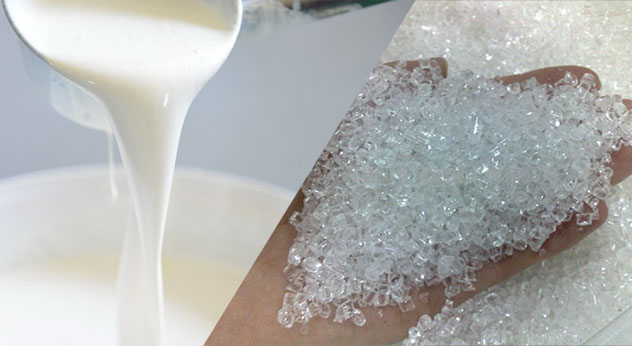Acrylic resins are generally divided by appearance into Water-based emulsion acrylic resins and Water-based solid acrylic resins.
Water-based emulsion resins are prepared by the addition of an emulsifier. Water soluble resins rely on the self-emulsification of polymer chains with hydrophilic groups. Water-dispersible resins are somewhere in between, with the addition of a small amount of emulsifier and insufficient hydrophilic groups, and rely on external forced power, such as high-speed stirring and dispersion, or ultrasound to achieve water dispersion. Therefore, the particle size and transparency are also between the two. Water emulsions are heavily oily and generally milky white in colour.
Water-based solid acrylic resins are transparent, a true solution in the form of a molecular level dispersion, in a nano-dispersion state.
Water-based emulsion acrylic resins, these products are mostly reacted with acrylate monomers without methacrylate, so these resins are polymerised at a lower glass transition temperature than solid acrylic resins. They have a lower TG, are faster drying, quicker drying, and have a lower TG.
They maintain a high gloss performance over a long period of time and are free from APEO, so they are best used on some substrates (soft) paper, leather and other softer substrates.
Water-based solid acrylic resins, with good solubility, abrasion resistance, high transparency, good printability
Their current applications are paper varnishes and printing inks. Other applications are waiting to be developed.